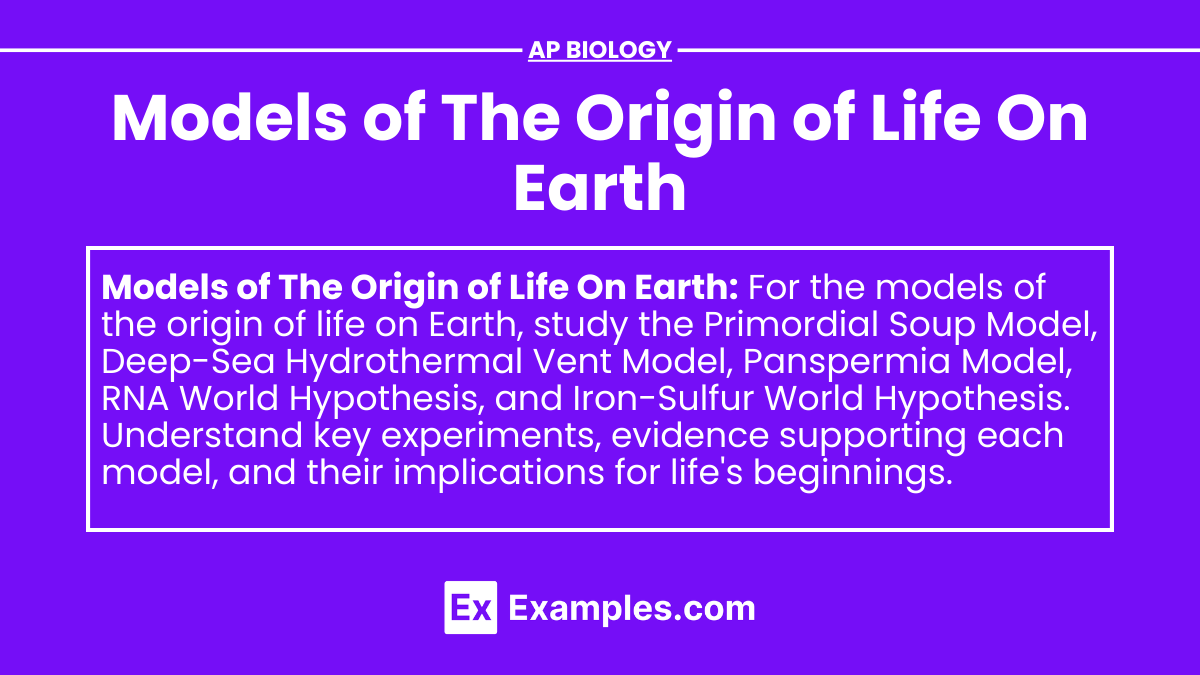In the AP Biology exam, understanding the models of the origin of life on Earth is essential. These models, including the Primordial Soup Model, Deep-Sea Hydrothermal Vent Model, Panspermia Model, RNA World Hypothesis, and Iron-Sulfur World Hypothesis, offer insights into how life might have begun. By studying key experiments and evidence supporting each model, students can grasp the complex processes that could have led to the emergence of life, providing a foundation for understanding evolution and biodiversity.
Learning Objectives
By studying the models of the origin of life on Earth, you will explore various hypotheses like the Primordial Soup Model, Deep-Sea Hydrothermal Vent Model, Panspermia Model, RNA World Hypothesis, and Iron-Sulfur World Hypothesis. You will analyze key experiments and evidence supporting each model, understand how life might have begun, and connect these concepts to broader topics in evolution and molecular biology. Mastering these models will enhance your understanding of life’s origins and evolutionary processes.
Major Models of the Origin of Life
Primordial Soup Model
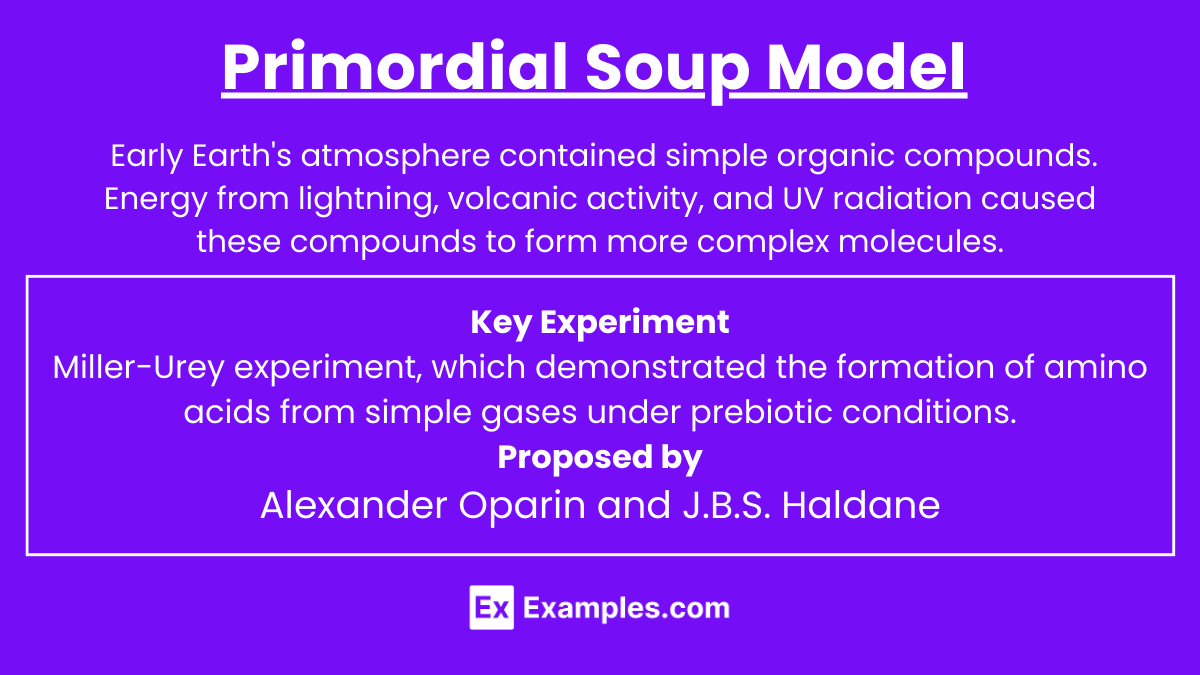
- Proposed by: Alexander Oparin and J.B.S. Haldane
- Concept: Early Earth’s atmosphere contained simple organic compounds. Energy from lightning, volcanic activity, and UV radiation caused these compounds to form more complex molecules.
- Key Experiment: Miller-Urey experiment, which demonstrated the formation of amino acids from simple gases under prebiotic conditions.
Deep-Sea Hydrothermal Vent Model
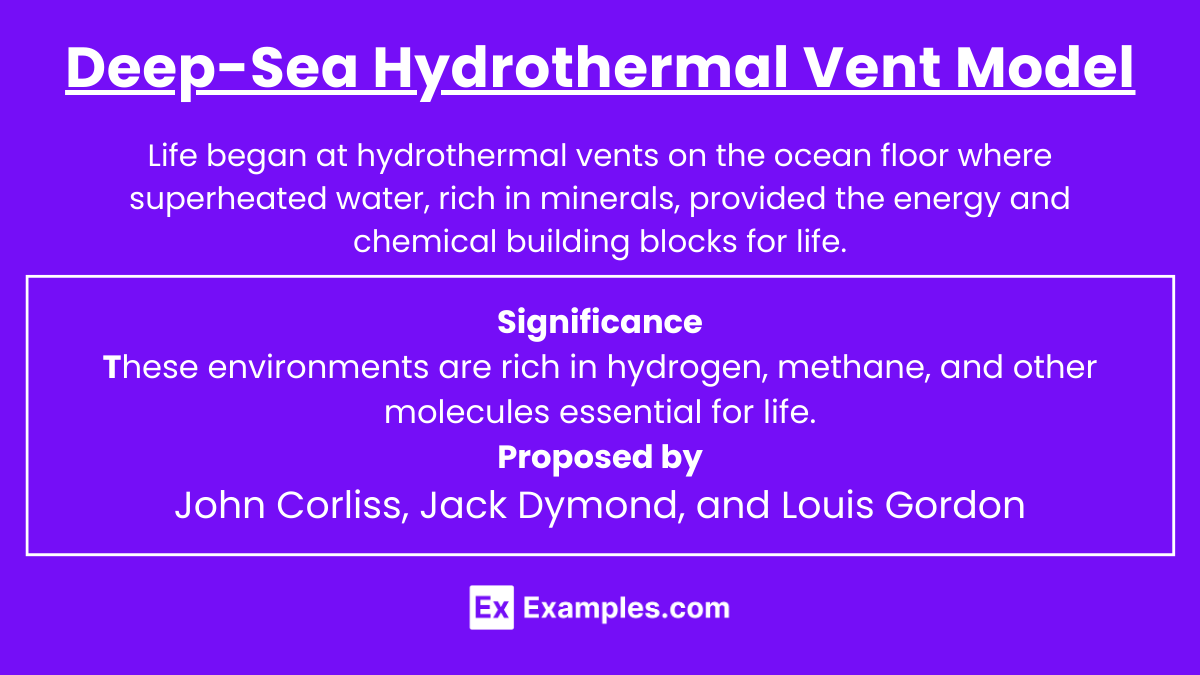
- Proposed by: John Corliss, Jack Dymond, and Louis Gordon
- Concept: Life began at hydrothermal vents on the ocean floor where superheated water, rich in minerals, provided the energy and chemical building blocks for life.
- Significance: These environments are rich in hydrogen, methane, and other molecules essential for life.
Panspermia Model
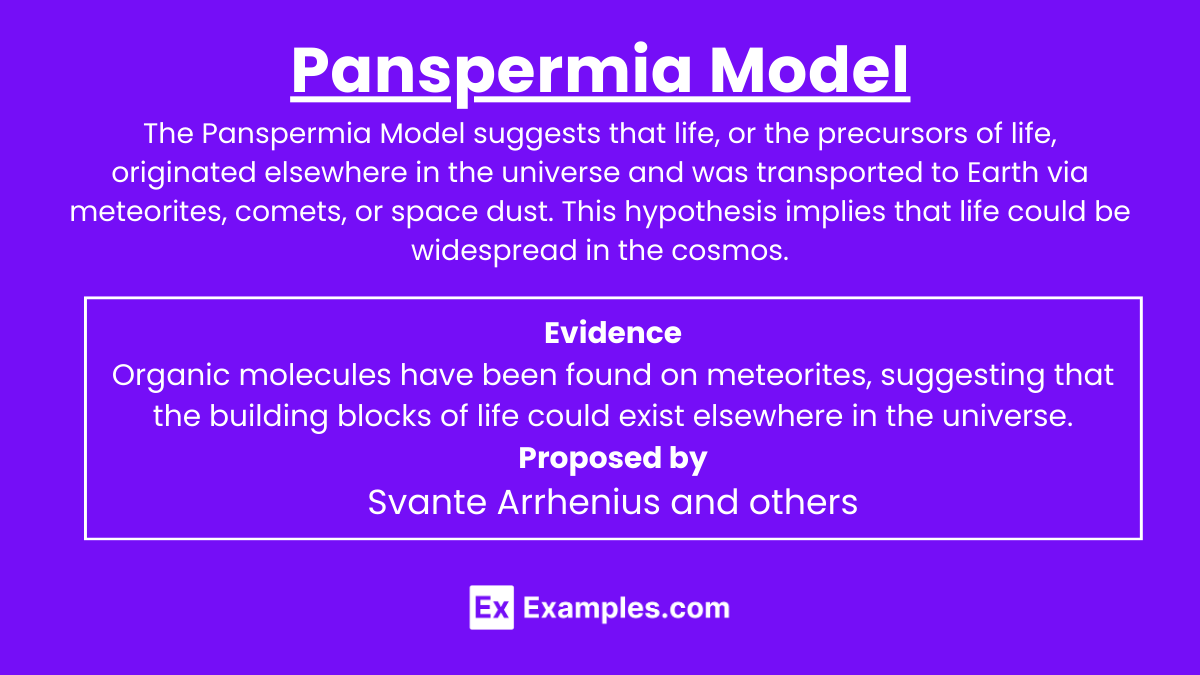
- Proposed by: Svante Arrhenius and others
- Concept: Life, or the precursors of life, were brought to Earth from outer space via meteorites or comets.
- Evidence: Organic molecules have been found on meteorites, suggesting that the building blocks of life could exist elsewhere in the universe.
RNA World Hypothesis

- Proposed by: Walter Gilbert
- Concept: RNA, capable of both storing genetic information and catalyzing chemical reactions, was the first self-replicating molecule that led to the development of life.
- Key Experiment: Experiments have shown that RNA molecules can catalyze their own synthesis under certain conditions.
Iron-Sulfur World Hypothesis
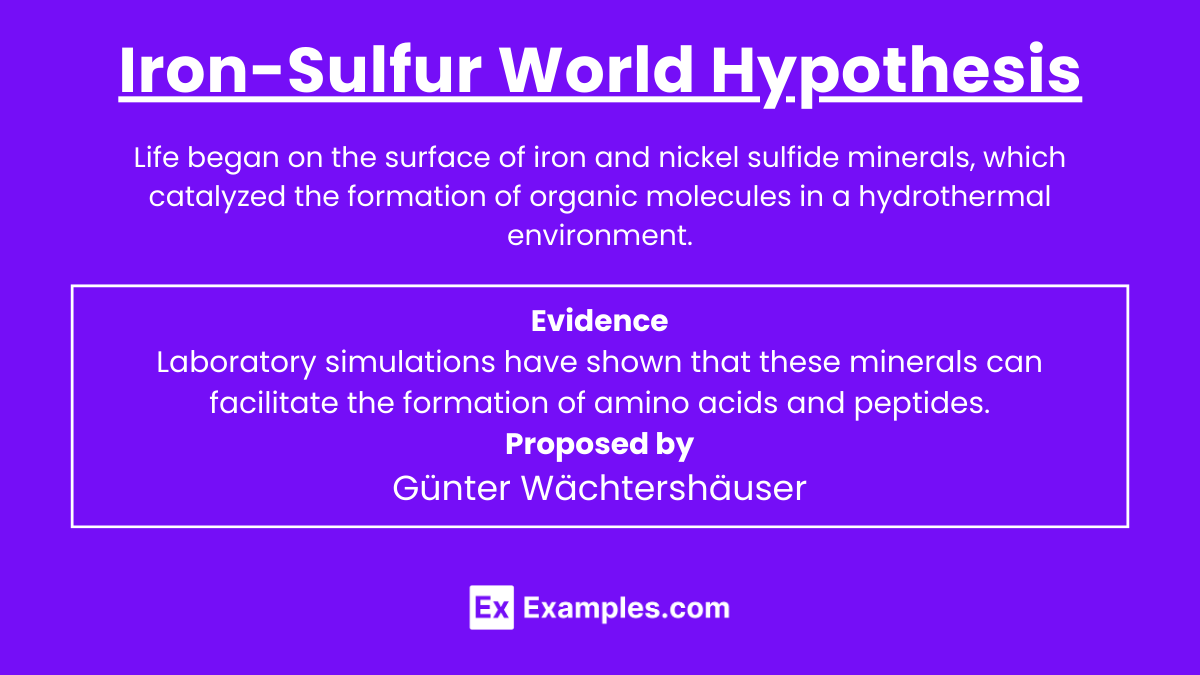
- Proposed by: Günter Wächtershäuser
- Concept: Life began on the surface of iron and nickel sulfide minerals, which catalyzed the formation of organic molecules in a hydrothermal environment.
- Evidence: Laboratory simulations have shown that these minerals can facilitate the formation of amino acids and peptides.
Examples
Example 1: Miller-Urey Experiment
- Description: Simulated early Earth’s atmosphere with a mixture of gases (methane, ammonia, hydrogen, and water vapor) and used electric sparks to mimic lightning.
- Result: Formation of amino acids, demonstrating that simple organic molecules can form under prebiotic conditions.
Example 2: Black Smokers (Hydrothermal Vents)
- Description: Hydrothermal vents on the ocean floor emit superheated, mineral-rich water.
- Significance: These environments provide energy and raw materials that could support the synthesis of complex organic molecules.
Example 3: Murchison Meteorite
- Description: A meteorite that fell in Australia in 1969, containing a variety of organic compounds, including amino acids.
- Significance: Supports the panspermia hypothesis by showing that organic molecules can form in space and potentially be delivered to Earth.
Example 4: Ribozymes
- Description: RNA molecules with catalytic properties, capable of catalyzing their own replication.
- Significance: Supports the RNA world hypothesis by demonstrating that RNA can act as both genetic material and a catalyst.
Example 5: Iron-Sulfur Mineral Catalysis
- Description: Laboratory experiments showing that iron-sulfur minerals can catalyze the formation of organic molecules.
- Significance: Supports the iron-sulfur world hypothesis by demonstrating the potential for these minerals to facilitate prebiotic chemistry.
Multiple Choice Questions
Question 1: Which model suggests that life began at hydrothermal vents on the ocean floor?
A. Primordial Soup Model
B. RNA World Hypothesis
C. Deep-Sea Hydrothermal Vent Model
D. Panspermia Model
Answer: C. Deep-Sea Hydrothermal Vent Model
Explanation: The Deep-Sea Hydrothermal Vent Model proposes that life began at hydrothermal vents on the ocean floor, where superheated, mineral-rich water provided the necessary conditions for life to form.
Question 2: The Miller-Urey experiment is associated with which origin of life model?
A. RNA World Hypothesis
B. Iron-Sulfur World Hypothesis
C. Primordial Soup Model
D. Panspermia Model
Answer: C. Primordial Soup Model
Explanation: The Miller-Urey experiment simulated early Earth’s atmosphere and demonstrated the formation of amino acids, supporting the Primordial Soup Model.
Question 3: What is the key concept of the RNA World Hypothesis?
A. Life originated from outer space
B. Life began at hydrothermal vents
C. RNA was the first self-replicating molecule
D. Iron-sulfur minerals catalyzed organic molecule formation
Answer: C. RNA was the first self-replicating molecule
Explanation: The RNA World Hypothesis suggests that RNA, capable of storing genetic information and catalyzing chemical reactions, was the first self-replicating molecule that led to the development of life.

